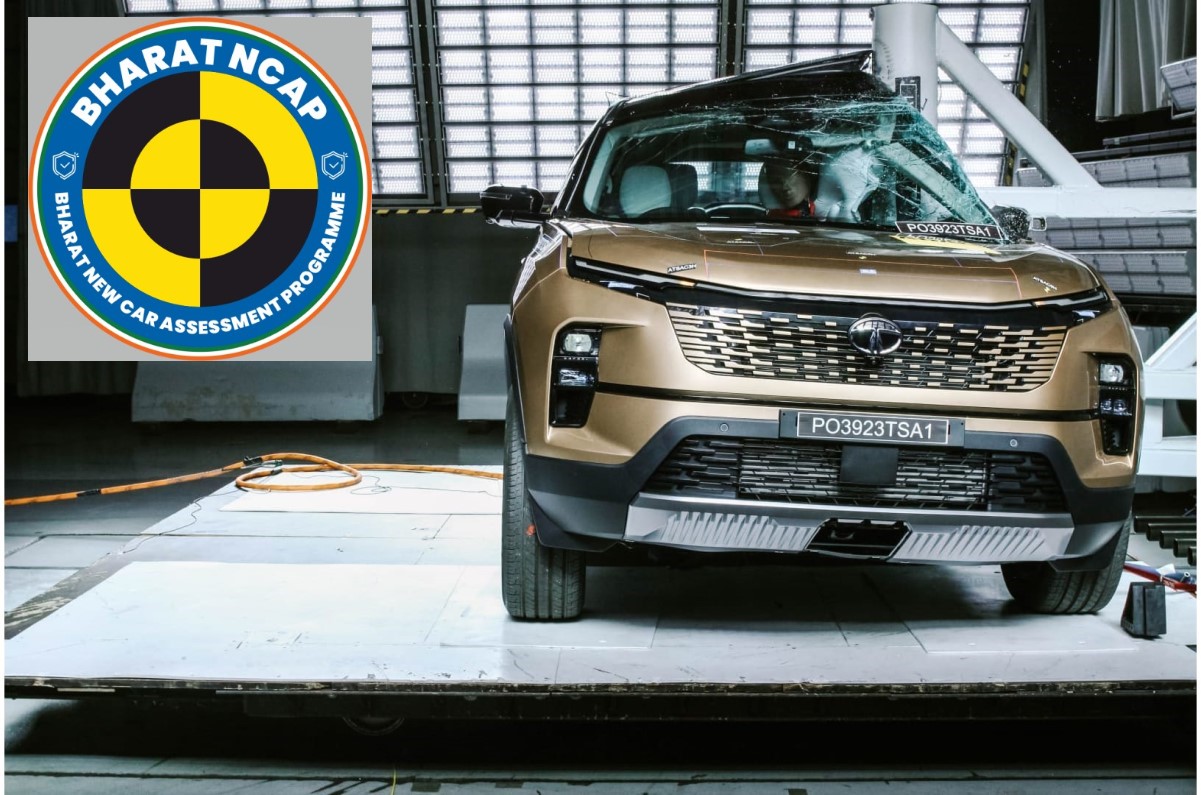How BNCAP has compelled carmakers to offer safety as a key tenet for their products.
August 22, 2023 was a landmark date in the history of the Indian automobile sector with the government taking a major initiative of boosting vehicle safety in the country by launching the Bharat New Car Assessment Programme (BNCAP) for determining new car safety. The Bharat NCAP regime came into effect from October 1, 2023.
The Indianised protocols – AIS 197 – which have been formulated by taking references from UK’s Global New Car Assessment Programme (GNCAP), aims to elevate the safety of vehicles in India by compelling carmakers to make it a key tenet of their products.
- Voluntary extra crash tests and safety kit required for 4- or 5-star rating
- Cost effective testing makes it easy for manufacturers to participate
- Maruti claims BNCAP won’t affect entry-level segments as much
The introduction of BNCAP entails products getting a star rating on a five-point scale. The ratings are based on performance in frontal-offset, side-impact, side-pole-impact crash tests, in line with the revised Global NCAP standard. The Bharat NCAP protocol will test cars for the frontal-offset crash at a speed of 64kph, perform a side-impact test at a speed of 50kph and specifically undertake a side-pole-impact crash test at 29kph in case the manufacturer opts for the vehicle to be certified for a 4- or 5-star rating.
The Bharat NCAP crash tests are voluntary for passenger vehicle makers and the protocols will award stars for both adult, and child protection offered by the vehicle.
Speaking at the launch event of Bharat NCAP in New Delhi, Nitin Gadkari, Union Minister for Road Transport and Highways, had said, “The BNCAP is India’s own crash testing programme based on global standards and it will propel the industry to march towards global standards, opening huge opportunity for exporting high-quality, made-in-India cars. Most importantly, it will help the Indian consumer make an informed decision when buying a new car.”
The latest safety regime also comes as a cost-effective solution for the Indian market, and while the cost of crash testing a car at a global centre is estimated to be around Rs 2.5 crore, the BNCAP test is pegged at Rs 60 lakh. “Therefore, it opens significant opportunities for independent testing and homologation bodies such as ARAI, ICAT and GARC to offer time-bound, and transparent testing and crash results,” Gadkari had said.
Carmakers compelled to offer safety
With the implementation of the BNCAP regime, the government’s earlier proposal to mandate six airbags in all new cars in India stands rested as the stringent protocols would necessitate carmakers to offer these passive safety solutions to achieve a higher star rating. According to Gadkari, “The BNCAP protocols require six airbags for a 4- or 5-star rating. Therefore, there is no need to make these safety devices mandatory anymore as the BNCAP will automatically push OEMs to offer them.”
“Customers have come to understand quality and there is a huge demand for higher safety-rated cars. Manufacturers who are offering six airbags are gaining more market share; the market has accepted this trend. Those who do not want to offer are facing problems as far as their sales are concerned,” he added.
In line with the government’s intent on October 3, 2023, the country’s second-largest carmaker, Hyundai Motor India Limited (HMIL) announced to standardise six airbags across its model line-up. The company also revealed its plans to volunteer three of its products for the Bharat NCAP crash test.
India’s largest carmaker, Maruti Suzuki India Limited (MSIL) has also shown its inclination to volunteer to get its products tested under Bharat NCAP. However, it maintains that the entry-level segment of cars might not see much impact on the latest crash standards owing to cost constraints. “The volumes in the entry-level segment have been declining over the last couple of years, and if the costs of these products go up further, the sales will decline even more. It is not a segment where people have surplus buying power, and therefore, I do not think there will be much change in safety at this point, beyond what is required in regulations,” RC Bhargava, chairman, MSIL, told our sister publication Autocar Professional.
Emergence of driver-assist technologies
With the growing advancement in technology, ADAS is increasingly making its way into modern vehicles, and emerging as the next-generation aids to enhance vehicle and road safety. The primary role of ADAS is to enhance safety of occupants and other road users by continuously monitoring the vehicle’s surroundings. The system utilises sensors, cameras and radars to provide real-time information about the vehicle’s surroundings, enabling it to react to potential dangers.
According to Mohan Savarkar, chief product officer, Tata Motors Passenger Vehicles, “We are now focusing on ensuring that a vehicle does not get into an accident in the first place. That is where active safety and ADAS come in.” Tata Motors introduced Level 2 ADAS features in the updated Harrier and Safari models – both were the first to be tested by BNCAP and secure a 5-star rating.
Also see:
Next-gen Tata Tiago, Tigor likely to get six airbags
Indian government must discourage sales of large SUVs: Global NCAP chief


